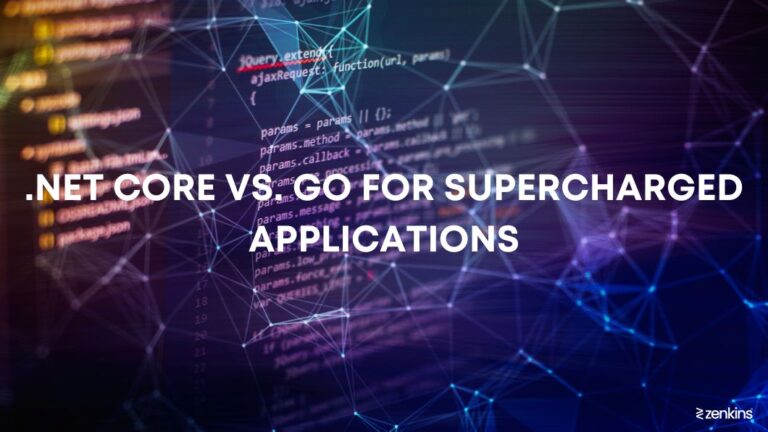Mastering Machine Learning in .NET: Unleash the Power of AI in Your Applications
Table of Contents
In today’s rapidly evolving technological landscape, integrating machine learning (ML) into applications has become essential for companies striving to stay competitive. With the increasing demand for smarter, more intuitive applications, developers are turning to machine learning to create solutions that not only meet but exceed user expectations. For developers working within the .NET ecosystem, mastering the implementation of machine learning models is a critical skill that can significantly enhance the functionality of their applications. This guide is designed to provide a comprehensive overview of how to implement machine learning in .NET, with a focus on practical strategies, tools, and best practices.
What is Machine Learning?
Before diving into the specifics of implementing machine learning in .NET, it’s important to understand what machine learning is. Machine learning is a subset of artificial intelligence (AI) that enables computers to learn from data and make decisions or predictions based on that data without being explicitly programmed to perform the task. Unlike traditional programming, where a developer writes specific code to perform a task, machine learning models are trained using large datasets. These models then use the learned patterns to make predictions or decisions when exposed to new data.
Why Implement Machine Learning in .NET?
The .NET framework has long been a popular choice among developers due to its robustness, flexibility, and the extensive library support it offers. Implementing machine learning in .NET comes with several advantages:
- Integration with Existing .NET Applications: Developers can seamlessly integrate ML models into existing .NET applications without the need to switch to a different platform or language.
- Scalability: The .NET ecosystem, especially with the advent of .NET Core, supports the creation of scalable applications that can handle increased loads and larger datasets.
- Cross-Platform Support: .NET Core is cross-platform, allowing developers to deploy machine learning applications across various operating systems.
- Extensive Libraries and Tools: Microsoft provides extensive libraries and tools for implementing machine learning in .NET, such as ML.NET, which simplifies the process for developers.
Getting Started with Machine Learning in .NET
To start implementing machine learning in .NET, you’ll need to familiarize yourself with the key tools and frameworks available in the .NET ecosystem. One of the most powerful and widely used tools is ML.NET.
What is ML.NET?
ML.NET is an open-source, cross-platform machine learning framework created by Microsoft. It allows .NET developers to build, train, and deploy custom machine learning models directly within their .NET applications. ML.NET supports a variety of machine learning tasks, including classification, regression, clustering, anomaly detection, and more.
Key Features of ML.NET:
- Ease of Use: ML.NET is designed to be easy to use for .NET developers, even those with little to no experience in machine learning.
- Versatility: Supports a wide range of machine learning tasks.
- Integration: Seamlessly integrates with existing .NET applications.
- Extensibility: Developers can use TensorFlow, ONNX, and other ML libraries alongside ML.NET for more complex scenarios.
Building a Machine Learning Model in .NET with ML.NET
Let’s walk through the process of building a machine learning model in .NET using ML.NET. For this example, we’ll create a simple sentiment analysis model that classifies text as positive or negative.
Step 1: Setting Up Your Development Environment
Before you begin, ensure you have the following installed on your machine:
- Visual Studio 2019 or later: This is the IDE we’ll be using for development.
- .NET Core SDK: ML.NET is supported in .NET Core, so make sure the SDK is installed.
- ML.NET NuGet Package: You can add this package to your project via NuGet Package Manager.
Once you have the development environment set up, you can create a new .NET Core console application in Visual Studio.
Step 2: Installing ML.NET
To install ML.NET, open the NuGet Package Manager in your project and search for “Microsoft.ML”. Install the package to your project. You may also need additional packages depending on the machine learning tasks you want to perform, such as “Microsoft.ML.DataView” or “Microsoft.ML.TensorFlow”.
Install-Package Microsoft.MLStep 3: Preparing the Data
Machine learning models require data for training. For our sentiment analysis model, we’ll need a dataset that contains text labeled as either positive or negative. You can either create your own dataset or use a publicly available one, such as the IMDB movie reviews dataset.
The dataset should be formatted in a way that ML.NET can understand. Typically, this would be a CSV file where each row represents a data point, and each column represents a feature or label.
Text,Label
"I love this product!",1
"This is the worst experience I’ve ever had.",0
...
In this example, the Text column contains the text to be analyzed, and the Label column contains the sentiment label (1 for positive, 0 for negative).
Step 4: Loading the Data
With the data prepared, the next step is to load it into the ML.NET pipeline. The MLContext object in ML.NET is the entry point for all machine learning operations.
var mlContext = new MLContext();
var dataView = mlContext.Data.LoadFromTextFile<SentimentData>("path_to_your_data.csv", separatorChar: ',', hasHeader: true);
Here, SentimentData is a class that represents the structure of the data.
public class SentimentData
{
public string Text { get; set; }
public bool Label { get; set; }
}Step 5: Building the Machine Learning Pipeline
In ML.NET, a pipeline is a sequence of data transformations followed by a learning algorithm. For our sentiment analysis model, we’ll use the FeaturizeText transformation to convert the text data into a format that the learning algorithm can understand. We’ll then use the SdcaLogisticRegression algorithm to train the model.
var pipeline = mlContext.Transforms.Text.FeaturizeText("Features", nameof(SentimentData.Text))
.Append(mlContext.Transforms.Conversion.MapValueToKey("Label"))
.Append(mlContext.Transforms.Concatenate("Features", "Features"))
.Append(mlContext.Transforms.NormalizeMinMax("Features"))
.Append(mlContext.MulticlassClassification.Trainers.SdcaMaximumEntropy())
.Append(mlContext.Transforms.Conversion.MapKeyToValue("PredictedLabel"));Step 6: Training the Model
With the pipeline defined, you can now train the model using the Fit method. This will process the data and apply the learning algorithm to create a model.
var model = pipeline.Fit(dataView);Step 7: Evaluating the Model
After training, it’s important to evaluate the model’s performance to ensure it meets the desired accuracy. ML.NET provides several metrics for evaluating models, such as accuracy, precision, and recall.
var predictions = model.Transform(dataView);
var metrics = mlContext.MulticlassClassification.Evaluate(predictions);
Console.WriteLine($"Accuracy: {metrics.MicroAccuracy:P2}");Step 8: Using the Model for Predictions
Once the model is trained and evaluated, it can be used to make predictions on new data. You’ll need to create a prediction engine that takes new input data and outputs the predicted label.
var predictionEngine = mlContext.Model.CreatePredictionEngine<SentimentData, SentimentPrediction>(model);
var prediction = predictionEngine.Predict(new SentimentData { Text = "This is an amazing product!" });
Console.WriteLine($"Prediction: {prediction.PredictedLabel}");Here, SentimentPrediction is a class that represents the model’s output.
public class SentimentPrediction
{
public bool PredictedLabel { get; set; }
}Advanced Machine Learning in .NET
While the above example provides a basic introduction to machine learning in .NET, there are many advanced techniques and tools that can be leveraged to create more sophisticated models.
1. Using Pre-trained Models with TensorFlow and ONNX
In addition to building custom models from scratch, ML.NET allows developers to use pre-trained models created in other frameworks like TensorFlow or ONNX. This is particularly useful for complex tasks like image recognition or natural language processing, where training a model from scratch can be resource-intensive.
To use a TensorFlow model in ML.NET, you would install the Microsoft.ML.TensorFlow NuGet package and load the model into your pipeline.
var pipeline = mlContext.Model.LoadTensorFlowModel("path_to_model")
.Append(mlContext.Transforms.Conversion.MapKeyToValue("PredictedLabel"));2. Customizing Algorithms with Hyperparameter Tuning
Machine learning models often require fine-tuning of their hyperparameters to achieve optimal performance. ML.NET supports hyperparameter tuning through its AutoML feature, which automatically searches for the best parameters for a given model.
var experimentResult = mlContext.Auto().CreateBinaryClassificationExperiment(60).Execute(dataView, labelColumnName: "Label");
var bestModel = experimentResult.BestRun.Model;3. Deploying ML.NET Models
After training and evaluating your model, the final step is to deploy it so it can be used in a production environment. ML.NET models can be deployed in various ways, including:
- As a .NET application: The model can be embedded directly into a .NET application, whether it’s a desktop, web, or mobile app.
- As a REST API: The model can be deployed as a web service using ASP.NET Core, allowing other applications to make predictions via HTTP requests.
- On Azure: For large-scale applications, the model can be deployed on Azure, leveraging Azure Machine Learning or other cloud services for scalability.
Best Practices for Implementing Machine Learning in .NET
When implementing machine learning in .NET, it’s important to follow best practices to ensure your models are effective and maintainable.
1. Start Simple:
Begin with a simple model and gradually increase complexity as needed. This approach helps you understand the problem and the data before investing in more complex solutions.
2. Use Cross-Validation:
To avoid overfitting, use cross-validation techniques to evaluate your model on multiple subsets of the data.
3. Monitor and Update Models:
Machine learning models can degrade over time as new data becomes available. Regularly monitor the performance of your models and retrain them as necessary.
4. Leverage Transfer Learning:
When working with complex tasks, consider using transfer learning to adapt pre-trained models to your specific use case, saving time and computational resources.
5. Document Your Work:
Machine learning projects can quickly become complex. Keep detailed documentation of your model architecture, hyperparameters, and evaluation metrics to make future maintenance easier.
FAQ: Mastering Machine Learning in .NET
What is ML.NET?
ML.NET is an open-source, cross-platform machine learning framework developed by Microsoft. It allows .NET developers to build, train, and deploy custom machine learning models directly within their .NET applications.
How do I install ML.NET in my .NET project?
You can install ML.NET via the NuGet Package Manager in Visual Studio by searching for “Microsoft.ML” and adding it to your project.
What types of machine learning tasks can ML.NET handle?
ML.NET supports a variety of machine learning tasks, including classification, regression, clustering, anomaly detection, recommendation, and more.
Can I use pre-trained models in ML.NET?
Yes, ML.NET supports the use of pre-trained models from frameworks like TensorFlow and ONNX, making it easier to implement complex tasks like image recognition and natural language processing.
What are the best practices for deploying machine learning models in .NET?
Best practices include starting with a simple model, using cross-validation to avoid overfitting, regularly monitoring and updating models, leveraging transfer learning, and maintaining thorough documentation.
How do I evaluate the performance of my ML.NET model?
ML.NET provides various metrics for model evaluation, such as accuracy, precision, recall, and F1 score. You can use the Evaluate method to assess your model’s performance.
Can I deploy ML.NET models to the cloud?
Yes, ML.NET models can be deployed to the cloud using Azure services, allowing for scalable and reliable machine learning deployments.
Do I need to be a data scientist to use ML.NET?
No, ML.NET is designed to be accessible to .NET developers, even those with little to no experience in machine learning. Its user-friendly API and extensive documentation make it easy to get started.
Conclusion
Implementing machine learning in .NET is a powerful way to enhance your applications, making them more intelligent and responsive to user needs. With tools like ML.NET, .NET developers can easily integrate machine learning into their workflows without needing to become experts in data science. By following the steps outlined in this guide, you can start building and deploying machine learning models in .NET, opening up new possibilities for your applications.
Whether you’re creating a simple sentiment analysis tool or a complex predictive model, mastering machine learning in .NET is a valuable skill that can set your applications apart in a competitive market. As you continue to explore the capabilities of ML.NET and other machine learning tools in the .NET ecosystem, you’ll be well-equipped to tackle a wide range of challenges and deliver cutting-edge solutions to your users.




